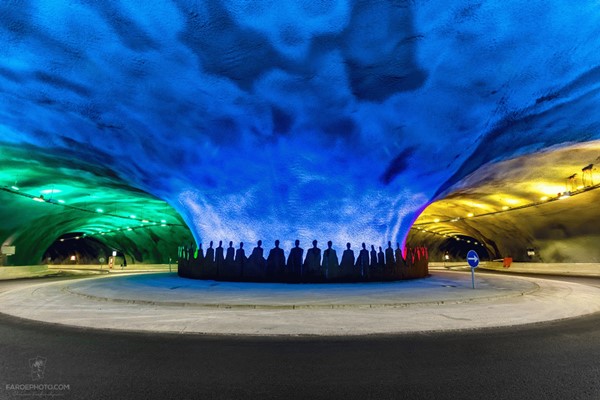Latest News
-
 Toyota Pledges $1.4 Billion To U.S. Plant For New Electric SUV, Creating 340 Jobs
Toyota Pledges $1.4 Billion To U.S. Plant For New Electric SUV, Creating 340 Jobs -
 Genesis And Foundation Boost STEAM Education With $20K Donation In Central Florida
Genesis And Foundation Boost STEAM Education With $20K Donation In Central Florida -
 O’Gara Reveals New Aston Martin Vantage Models In Beverly Hills Event
O’Gara Reveals New Aston Martin Vantage Models In Beverly Hills Event -
 Renault Electrifies Roland-Garros With The Renault 5 E-Tech Electric Special Series
Renault Electrifies Roland-Garros With The Renault 5 E-Tech Electric Special Series -
 Chevrolet Blazer EV Secures Spot In 2024 Wards 10 Best Interiors & UX
Chevrolet Blazer EV Secures Spot In 2024 Wards 10 Best Interiors & UX -
 2025 Ram 1500 RHO Sets New Standards For Off-Road Truck Value And Performance
2025 Ram 1500 RHO Sets New Standards For Off-Road Truck Value And Performance -
 Hyundai's 2024 Santa Fe And Kona Secure Wards Best Interiors & UX Awards
Hyundai's 2024 Santa Fe And Kona Secure Wards Best Interiors & UX Awards -
 Ram Reveals New 2025 Off-Road Trucks With Unmatched Performance And Style
Ram Reveals New 2025 Off-Road Trucks With Unmatched Performance And Style -
 Mercedes-Benz USA And Bijan Robinson Collaborate With Little Free Library To Enhance Community Literacy
Mercedes-Benz USA And Bijan Robinson Collaborate With Little Free Library To Enhance Community Literacy -
 Rapid Recovery In Used Car Market As Sales Times Halve, Says HonkHonk
Rapid Recovery In Used Car Market As Sales Times Halve, Says HonkHonk
The World's First Undersea Roundabout Looks Like A Giant Jellyfish
An underwater tunnel connecting the two Faroe Islands of Streymoy and Eysturoy features the world's first undersea roundabout. The roundabout looks like a giant jellyfish and marks the geographical centre of the Faroe Is
An underwater tunnel connecting the two Faroe Islands of Streymoy and Eysturoy features the world's first undersea roundabout.
Recommended Video
The roundabout looks like a giant jellyfish and marks the geographical centre of the Faroe Islands.

The tunnel known as the Eysturoyartunnil connects the two largest cities - Tórshavn and Klaksvik - in the Faroe Islands. The tunnel which is 11 kilometres long, halves the travel time between the two cities from 70 minutes to just 35 minutes.

The single tube double-laned undersea tunnel splits into two at the roundabout. The tunnels that emerge from the roundabout connect the two bay areas of the Skálafjørður fjord on Eysturoy island. Taking the undersea tunnel also cuts down the travel distance between the two bay areas of the Skálafjørður fjord from 25 kilometres to just 5 kilometres.

The subsea tunnel was opened in December 2020 after only four years of construction. The tunnel which cuts across the Atlantic Ocean lies 189 metres below the water's surface at its lowest point. The highlight of the tunnel is of course the roundabout which sits 72 metres below the surface.

What makes the undersea roundabout even more special is the fact that it looks like a giant jellyfish. The central pillar of the roundabout is illuminated in a sea blue colour that is decorated by Faroese artist Tróndur Patursson. The central pillar is made from natural rock left behind after the blasting process for the construction of the tunnel system.

Around the central pillar is an art installation by Tróndur Patursson. The 80-metre steel structure has full-sized figures holding hands around the roundabout. These figures stare inwards as if they are worshippers around a volcanic fire.

To ensure the sea doesn't disrupt those in the tunnel, the undersea infrastructure project features a system of pumps and kilometres of pipes that ensures that rain and surface water is kept away from the rods running inside the tunnel.

Gravity along with multiple gratings and pipes leads any water down to the lowest point in the tunnel where large pumps (with 16bars/232psi of pressure) push the water back to the surface of the water.

Thoughts About The World's First Undersea Roundabout
The undersea roundabout on the Eysturoyartunnil is one of the most unique highlights on any road anywhere in the world. The fact that this roundabout sits 72 metres below the surface of the sea and its unique looks will ensure that tourists will continue to flock to this tiny set of islands in the Atlantic Ocean which is best known for its unspoiled landscape and bird cliffs.
Images via: visitfaroeislands.com



 Click it and Unblock the Notifications
Click it and Unblock the Notifications















